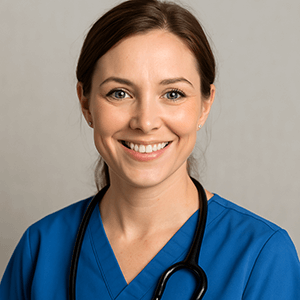Anatomy vs. Physiology: What's the Difference?
First things first, let's distinguish between anatomy and physiology.
- Anatomy is all about structure. Think of it as the "what" and "where" of the human body. For example, anatomy looks at muscles, bones, tendons, and how they are arranged.
- Physiology, on the other hand, is the study of function. It's the "how" and "why" things work. For instance, physiology explores how muscles contract and how bones support movement.
A handy tip: Structure dictates function. This means that understanding the structure (anatomy) helps us understand how it works (physiology).
Understanding normal A&P is fundamental—learn how to apply it clinically by applying pathophysiology to NCLEX questions.
Gross Anatomy vs. Microscopic Anatomy
- Gross Anatomy: This is the study of large structures that you can see with the naked eye. For example, looking at the muscles in the chest area.
- Microscopic Anatomy: This involves structures that require a microscope to see, like muscle cells and their components.
Key Terms to Know
- Morphology: The study of structure. It's a term you'll hear often in anatomy.
- Pathology: The study of disease. Understanding normal anatomy and physiology helps us understand what goes wrong in diseases.
Characteristics of Life
To understand how the human body works, we need to know the basic characteristics of life. Here are a few:
- Movement: This includes both external (like running) and internal (like your heart pumping blood) movements.
- Responsiveness: The ability to sense changes and react, like pulling your hand away from a hot stove.
- Reproduction: This includes both making babies and cellular reproduction (mitosis).
- Respiration: The process of gas exchange, mainly taking in oxygen and expelling carbon dioxide.
- Digestion: Breaking down food into nutrients.
- Absorption: Taking those nutrients into the body's cells.
- Circulation: Moving nutrients and oxygen around the body.
- Assimilation: Building larger molecules from smaller ones.
- Excretion: Getting rid of waste products.
- Secretion: Releasing substances like digestive enzymes.
Metabolism: The Big Picture
Metabolism encompasses all the chemical and physiological processes that occur in the body. It breaks down into two main categories:
- Anabolism: Building larger molecules from smaller ones.
- Catabolism: Breaking down larger molecules into smaller ones.
Basic Physiological Needs
For survival, our bodies have some basic needs:
- Water: Essential for transportation, lubrication, and temperature regulation.
- Food: Provides energy and building blocks for growth and repair.
- Oxygen: Necessary for producing energy (ATP).
- Temperature: Maintaining an ideal body temperature (98.6°F) is crucial for proper metabolic function.
- Pressure: Atmospheric and hydrostatic pressure are important for breathing and blood circulation.
Wrapping Up
Understanding these foundational concepts in anatomy and physiology will set you up for success in your nursing studies. Remember, the more you understand about how the body is structured and how it functions, the better you'll be at diagnosing and treating patients.
Stay curious, keep learning, and don't hesitate to ask questions. You've got this!







